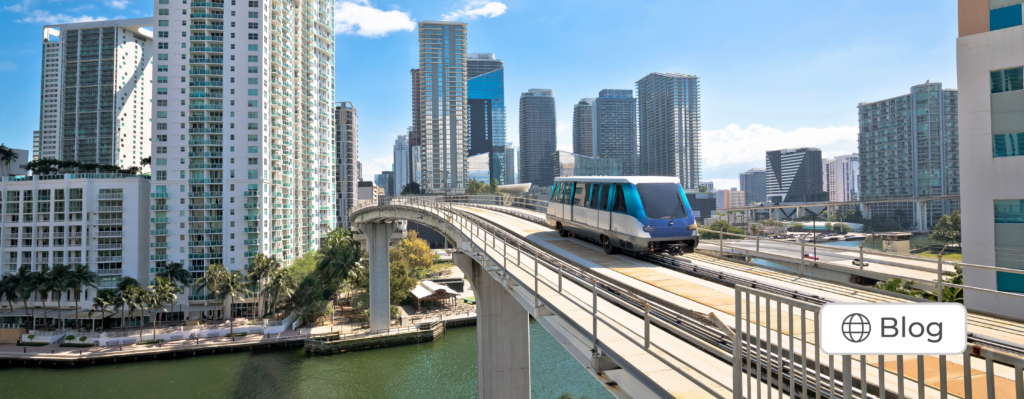The development and expansion of the high-speed Brightline train in Florida have dramatically transformed property prices in the regions connected by this train. In this segment, we discuss how the property market in the region has evolved considering this development.
Brightline has revolutionized mobility in Florida, providing a fast and efficient transportation alternative that connects major urban centers. This improvement in transportation infrastructure has not only facilitated the movement of people but also triggered a series of effects on the real estate market. As areas around Brightline stations become more accessible, the demand for properties in these locations has increased significantly. This is due to the growing perception that living near a high-speed train station offers significant advantages, both in terms of convenience and time savings.
One of the most visible impacts of Brightline’s expansion has been the increase in property prices. Areas that previously may not have been as attractive to buyers are now considered high-value locations due to their proximity to train stations. This phenomenon is not exclusive to Florida; in many parts of the world, it has been observed that proximity to efficient public transportation increases property values. The main reason is that buyers are willing to pay more for the convenience of having quick and direct access to other metropolitan areas without the need to depend on vehicular traffic.
Impacts on Urban Development
The implementation of Brightline has brought new momentum to urban development in the region it traverses. Many construction and renovation projects have been undertaken in areas near the stations in an attempt to capitalize on the growing influx of passengers and the increased demand for auxiliary services by developers and business owners. The development of residential buildings, hotels, and shopping centers to attract both residents and tourists has been evident. A good example of this is the Miami Central station, which has experienced a new renaissance with new commercial and residential constructions coming to market since Brightline began operating.
The renewal and development around Brightline stations have also created new economic opportunities for local businesses, shops, cafes, and entertainment services. As more people move to these areas, the demand for services is expected to continue growing, further driving economic development.
Additionally, the integration of Brightline into the urban fabric has led to the creation of more sustainable communities. By encouraging the use of public transportation, dependency on cars is reduced, which in turn decreases traffic congestion and air pollution. This shift towards more sustainable modes of transportation is crucial in the fight against climate change and in promoting healthier, more livable urban environments.
Effect on Rental Prices
Rental prices in these regions have increased as people’s expectations have risen regarding living near a bullet train station, allowing landlords to charge more. This is particularly useful in densely populated cities like Miami and Fort Lauderdale, where rental space is highly competitive.
The increase in rental prices can be seen both as an opportunity and a challenge. For property owners, proximity to a Brightline station represents an opportunity to generate higher income due to high demand. Tenants are willing to pay more for the convenience and time savings that come with living near a high-speed train station.
The pressure on rental prices can also lead to the gentrification of areas near Brightline stations. As prices rise, it may become more difficult for low-income residents to remain in these areas, leading to the displacement of traditional communities. This phenomenon has been observed in many cities that have experienced significant transportation infrastructure improvements. It is important for urban planning and housing policy makers to consider these effects and seek ways to mitigate the negative impact on vulnerable communities.
Impact on the Climate
Finally, trains like Brightline, especially if they are electric, can significantly reduce carbon emissions, being more energy-efficient per passenger and kilometer traveled. Moreover, by providing a sustainable alternative, similar practices could be projected for future years in analyzing the impact of such projects on the economy and society at large.
The success of Brightline could serve as a model for future sustainable transportation projects. As cities and regions look for ways to reduce their environmental impact, efficient and low-emission public transportation becomes a priority. Florida’s experience with Brightline can provide valuable lessons on how to design and implement transportation systems that are both effective and environmentally responsible.
In summary, the Brightline train has not only transformed property prices in the regions it connects but has also spurred urban development, affected rental prices, and had a positive impact on the environment. As more regions consider implementing similar transportation systems, Brightline’s success in Florida can serve as an example of how efficient and sustainable transportation can benefit communities in multiple ways.
